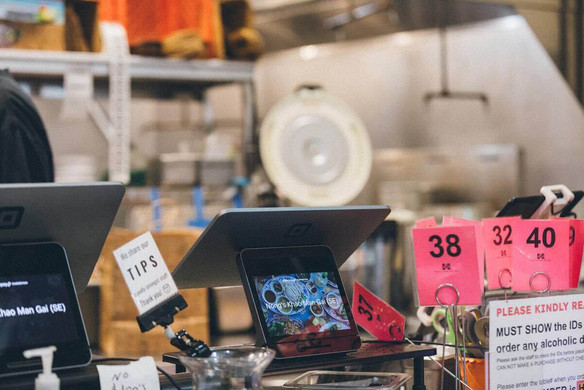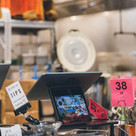Table of contents
When I opened my first restaurant twelve years ago, three things were crucial: Great food. A strong team. A solid location. Today restaurant owners have to do so much more to start on the right foot. A strong social media presence is a must. Easy online ordering is table stakes these days. But to really grow, more owners are moving toward what we at Square call a multihyphenate business model — introducing new offerings and changing the restaurant business model as we know it.
It truly feels like a movement. Nearly all (90%) business leaders surveyed in our Future of Restaurants report said they want to make more money through new offerings this year. Some owners are adding new items to their menu. Others are selling merchandise online and in person, while other restaurants are beginning to offer totally new services like subscriptions, events, and classes.
Don’t get me wrong. Finding creative ways to generate even more revenue is a big feat. Marketing new business offerings and managing additional inventory, which is already a grueling process, can create giant headaches. Plus, rising food and labor costs could mean you’re already dealing with tighter margins than ever. To expand successfully, it takes careful preparation, clear goals, and strong communication with your team. Paired with the right restaurant technology, you can easily add new offerings and make them profitable.
Turning my casual fine dining restaurant into something bigger
My team opened Puritan & Company, a casual fine-dining restaurant with an emphasis on New England fare, in Cambridge in 2012. When we began thinking about how we could expand, we found we could pretty easily reach more guests by offering delivery. This was only shortly after third-party applications like DoorDash and Uber Eats helped make takeout from full-service restaurants mainstream, and well before many of us were regularly working (and eating) at home. No, we weren’t the first ghost kitchen in the Boston area. But we were one of the first high-profile restaurants to create a side brand with a specific focus on home delivery. We opened Puritan Trading Company in 2018 as a restaurant inside Puritan & Company, operating as a to-go model.
When we launched, we knew it was important to create something different to avoid cannibalizing our business. But we also needed to think carefully about what new ingredients we needed to order and how this new offering would work with our current kitchen stations to avoid costly operational challenges. While designing the menu, we also focused on offering items that traveled well in takeout containers.
But we didn’t stop there. Over the years, we have monitored our customer preferences and behaviors. That led us to even more new beginnings. Not only do guests want the option to order food to go, but more guests are excited about dining in person today. With this in mind, we recently transformed the small, unused space we had next door to Puritan & Company and opened up Puritan Oyster Bar.
It was a perfect opportunity. We didn’t need to build an additional full kitchen. And despite being a small space, we’re able to direct any overflow seating to an adjacent event space.
Tips for expansion
If you’re thinking about tweaking your restaurant’s business model, there are key pieces of advice I’d suggest after looking back on my experience expanding Puritan & Company. Keep these things in mind as you evaluate your opportunities:
1. Always start with what your customers want.
For any new concept to be successful, you have to know what choices your customers already have in front of them. Evaluating your neighborhood can help you uncover any gaps in the market. It’s also helpful to see which concepts do really well that you can learn from.
If you run your restaurant on Square, you can look at your Dashboard data to understand your customers better. Gut check your expansion plans against critical points like when your restaurant is busiest, what your top-selling menu items are, and more.
2. Make sure your team is all in.
Some of our employees joined our restaurant when we first opened because they were passionate about being a part of highly culinary, chef-driven experiences. By launching Puritan Trading Company and adding a new, more casual menu, we were asking them to change their role. It’s clear to me now that not everyone was sold. So make sure to share your plans for expansion with your crew early and often. That way, you know whether you need to hire additional help or offer support to your current team through extra training.
3. Set a launch date and work back from it.
To turn your expansion idea into action, start by setting a date to launch. As best you can, try to hold yourself to the timeframe you determine. Then, once you’ve launched, be sure to measure your results. While outcomes might be slow in the beginning, learning can be incredibly beneficial early on.
Using tools that integrate with Square for Restaurants, like Websites and Team Management tools, you can easily access merch sales or the effectiveness of your team.
4. Start small at first.
In my eyes, the process of expanding your restaurant through new offerings is like building software. You have to actually break it down, iterate, get feedback, and throw out a process when necessary. Ultimately, this will de-risk any strategy you embark on. It’s much more painful and costly to shut down something that requires substantial capital to start. Start small and get it right first.
A new restaurant era
Rethinking your restaurant’s business model comes with challenges. But by growing in new ways, you can also get in front of more different customers, increase your sales volumes, and establish more predictability within your finances. All of that helps with your overall margins. The winners will undoubtedly be those who not only have a plan but also embrace technology to help them explore, test, and learn their way into new revenue-growing tactics.
![]()









